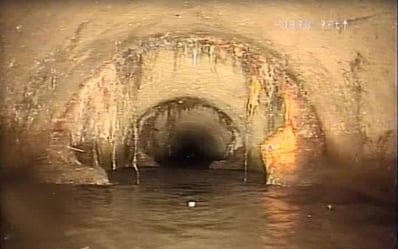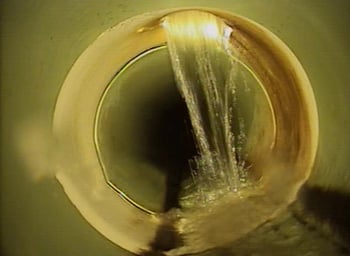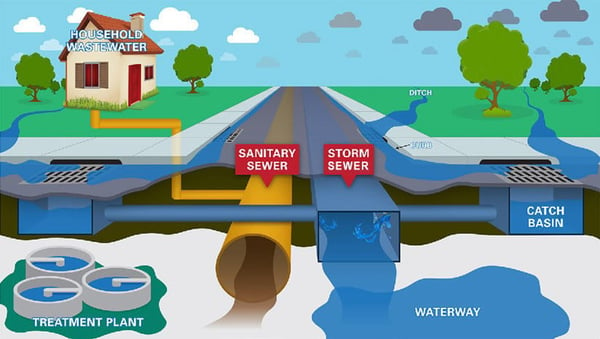
During wet weather events, NEW Water receives upwards of 3 – 5 times the normal amount of water coming through its system and into its facilities to be treated. And that’s not because people are flushing their toilets more frequently. What’s going on, and why should you care?
 Picture above: Root intrusion into a pipe indicates likely infiltration of clear water and can block sewer flow, NEW Water Televising Program.
Picture above: Root intrusion into a pipe indicates likely infiltration of clear water and can block sewer flow, NEW Water Televising Program.
 Picture above: Likely illicit sump pump connection discharging inflow of clear water into the sanitary sewer, NEW Water Televising Program 9/6/2018.
Picture above: Likely illicit sump pump connection discharging inflow of clear water into the sanitary sewer, NEW Water Televising Program 9/6/2018.
Well, in essence, our communities are paying for clear water to be cleaned. Additionally, the sanitary sewer system and water resource recovery facility were not designed to handle storm water, and significant upgrades could be needed if nothing is done to address this complex problem.
Stormwater should go to the storm sewer system. In NEW Water’s service area, our communities have two different and separate underground sewer systems to handle stormwater, and wastewater – and unlike some communities, they are not connected.
 Infographic credit: Town of Gilbert, AZ (Minor edits made to graphic)
Infographic credit: Town of Gilbert, AZ (Minor edits made to graphic)
The storm sewer takes stormwater and other clear water (rainwater, melted snow, runoff from lawns, rooftops, etc.), and sends it through a system of underground pipes that spill out directly into area waters, including the Fox River, East River, and the Bay of Green Bay. This water is not treated by NEW Water, it goes directly into the environment.
The sanitary sewer system carries anything you flush down the toilet, or send down the drains in your home, including water from toilets, showers, sinks, dishwashers, washing machines, and other plumbing components. For homes hooked up to municipal sanitary sewer in our service area, this wastewater is sent through an underground sanitary sewer pipe system to our treatment facilities, where it is treated and returned into the environment.
While the sanitary sewer and storm sewer pipes should not be interconnected, clear water does get into the sanitary sewer system. Clear water that enters into the sanitary sewer system is called Inflow and Infiltration, or I&I.
The path the community is currently on regarding I&I is unsustainable, and doing nothing is not an option. NEW Water is currently working with municipal customers in an I&I Stakeholder Advisory Group. NEW Water is dedicated to finding regional solutions to this complex issue. To learn how I&I can impact NEW Water during wet weather events, please read this article from WWOA’s Clarifier Magazine.

